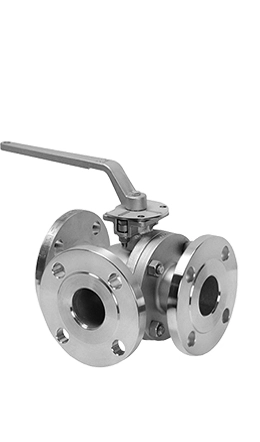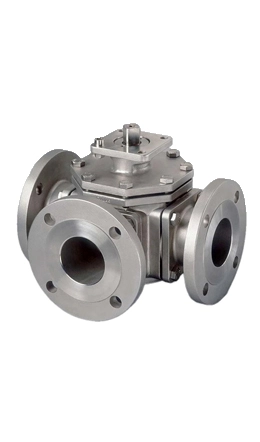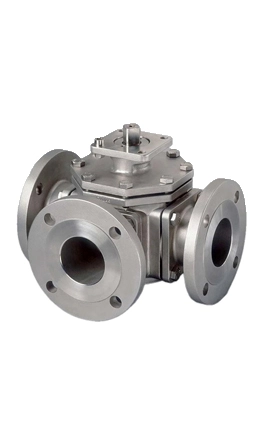A 3-way plug valve is a type of valve used to control the flow of fluids (liquids or gases) in a piping system. It features three ports, which can be arranged in various configurations to allow for different flow paths.



Basic Structure of a 3-Way Ball Valve
A 3-way ball valve has three ports (inlets/outlets) and a hollow, rotating ball with a bore (channel) that directs flow between the ports. The ball’s rotation angle determines the flow path.
Port Labels: Typically labeled Port A, Port B, and Port C.
Handle Positions: Flow paths change based on the handle’s rotation (e.g., 90° or 180°).
Key Flow Path Configurations
There are two main types of 3-way ball valves, defined by their bore design:
1. L-Port (L-Bore) Configuration
The ball has an L-shaped bore that connects two ports at a time.
Flow Patterns:
Mixing Flow: Combines two incoming streams into one outlet (e.g., Port A + Port B → Port C).
Diverting Flow: Directs one inlet stream to either of two outlets (e.g., Port A → Port B or Port A → Port C).
Handle Rotation:
90° rotation switches between diverting paths.
2. T-Port (T-Bore) Configuration
The ball has a T-shaped bore, allowing flow to split or merge across all three ports.
Flow Patterns:
Splitting Flow: Divides one inlet stream into two outlets (e.g., Port A → Port B + Port C).
Diverting Flow: Similar to L-Port but can connect all three ports in certain positions.
Handle Rotation:
180° rotation enables switching between splitting and diverting modes.
Selection Tips
1. Choose L-Port for mixing or diverting between two streams.
2. Choose T-Port for splitting flow or complex multi-port routing.
3. Verify pressure ratings and material compatibility (e.g., PTFE seats for chemicals).
Core Functions of a 3-Way Ball Valve
A 3-way ball valve is designed to manage flow between three ports (inlets/outlets) by rotating its internal ball. Its key functions include:
1. Flow Diversion
Redirects fluid from one inlet to two outlets (or vice versa).
Example: Switching flow between two storage tanks or process lines.
Common in HVAC systems to alternate between heating and cooling circuits.
2. Flow Mixing
Combines two incoming streams into one outlet.
Example: Blending hot and cold water for temperature control.
3. Flow Shutoff
Blocks flow through specific ports in certain positions.
Example: Isolating a section of a pipeline for maintenance.
4. Bypass Control
Creates a bypass loop to reroute fluid around equipment (e.g., pumps, filters).
Example: Maintaining system pressure during filter servicing.
Advantages of 3-Way Ball Valves
1. Versatility: Handles mixing, diverting, and shutoff in a single valve.
2. Compact Design: Replaces multiple valves in complex systems.
3. Low Maintenance: Robust construction with minimal leakage risk.
Selection Guide
1. Choose L-Port for simple diverting/mixing (e.g., HVAC, blending).
2. Choose T-Port for splitting flow or multi-port bypass (e.g., chemical distribution).
3. Material: Match wetted parts (e.g., stainless steel, PTFE seals) to fluid compatibility.
4. Pressure Rating: Ensure it meets system requirements (e.g., ANSI 150 to 600).
